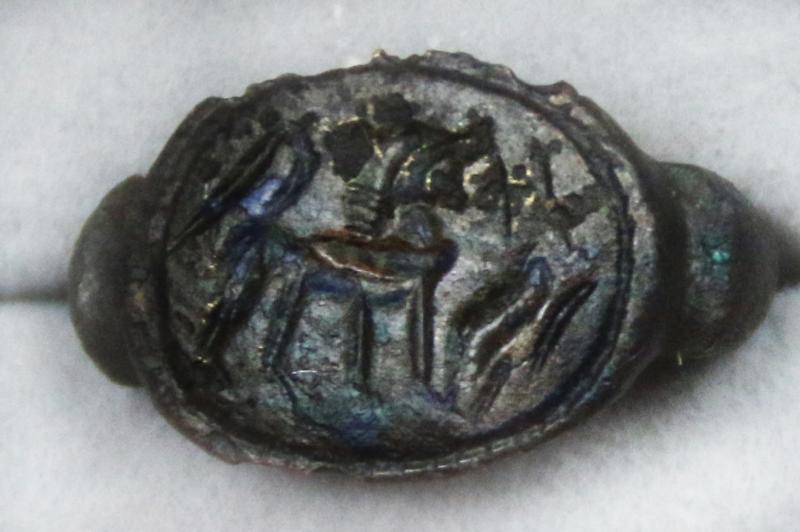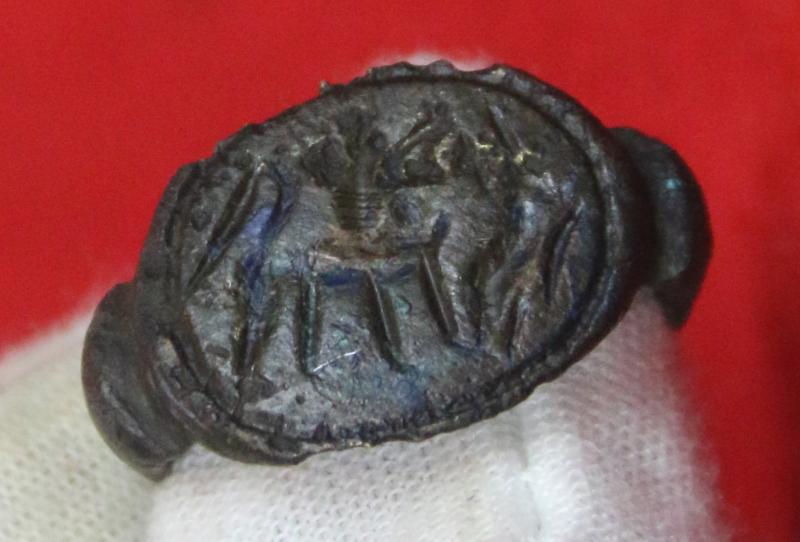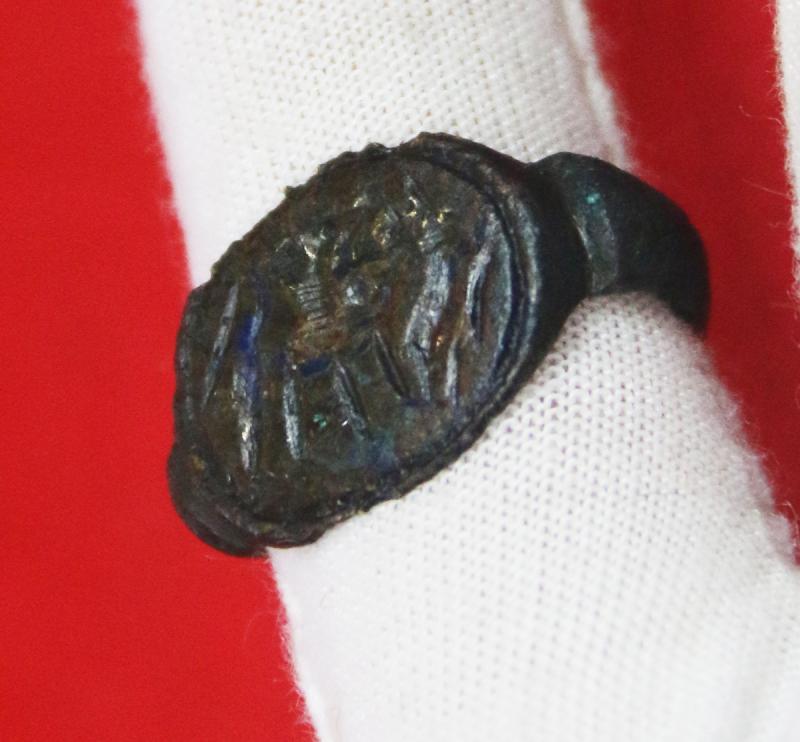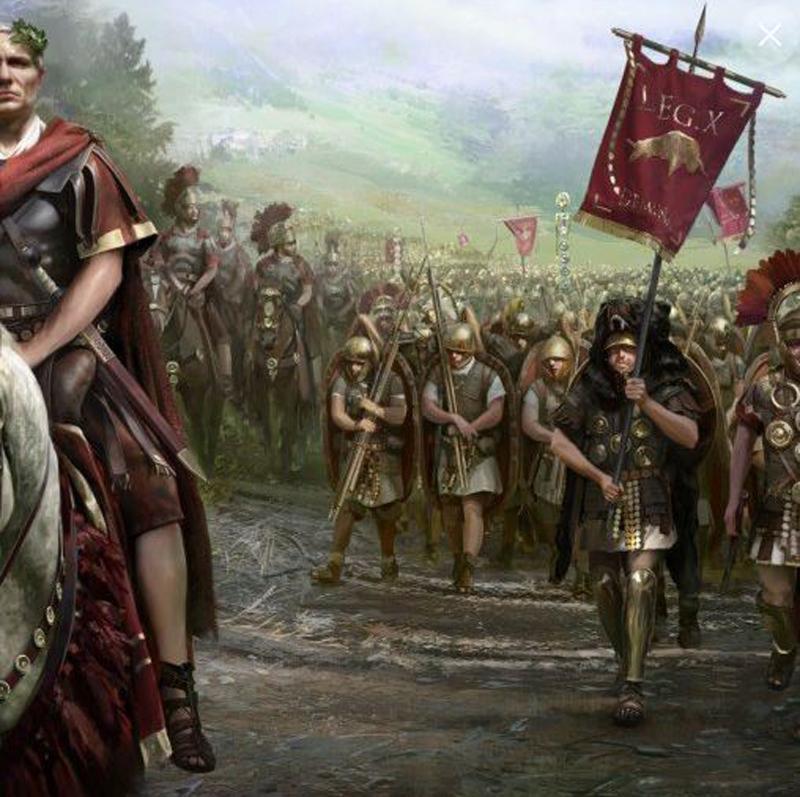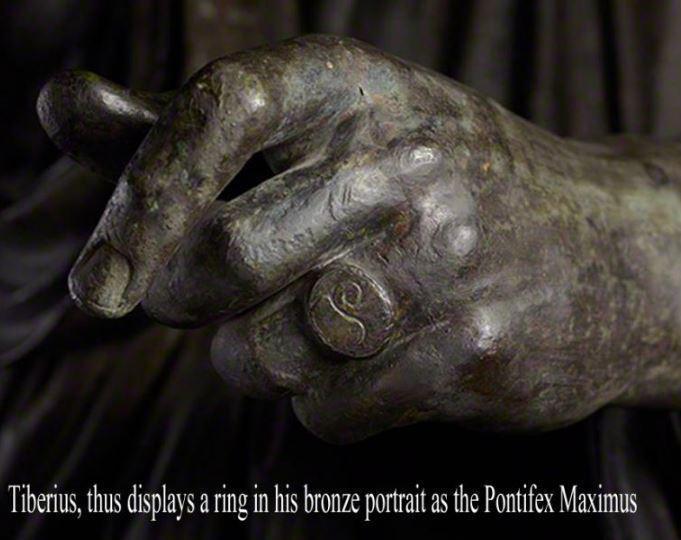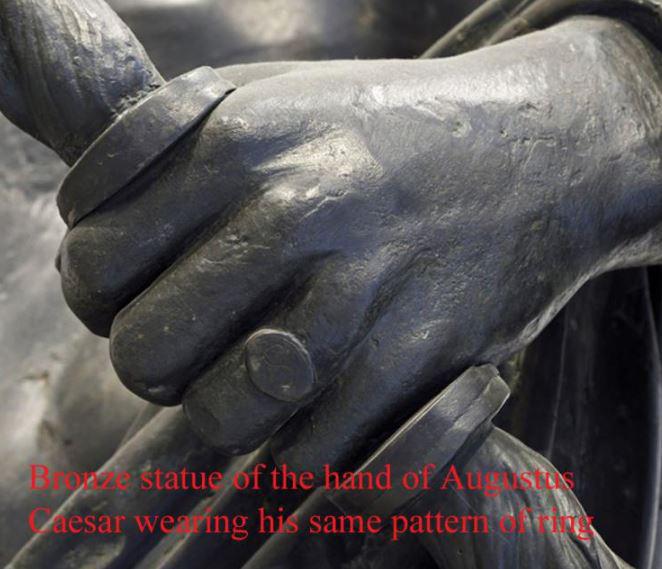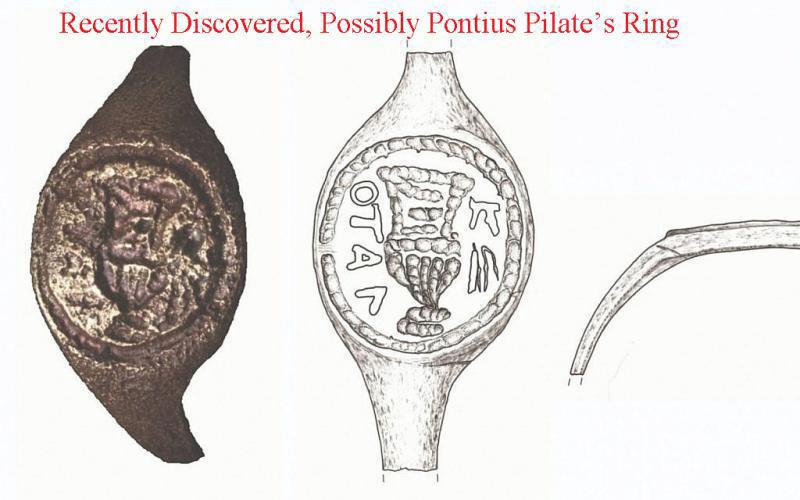Ancient Early Imperial 1st Century Roman Equestris Legionary's or Centurion's Ring Intaglio Engraved With Horse Mounted Roman Engaged in Combat
Classified by the seminal classification of ancient ring forms, by Dr. Martin Henig, as Ancient Roman, Henig type Xb.
Wide oval bezel affixed to flattened shoulders engraved copper alloy, with good smooth surface and patina. Almost identical to one found in the UK, near Hadrian's Wall. The ring was important for displaying the Roman's status. For example Tiberius, who was after all left-handed according to Suetonius, thus displays a ring in his bronze portrait as the Pontifex Maximus:
The most common alloy employed for the largest number of ornaments and with the greatest variety of shapes was brass, the alloy of copper and zinc. The high number of alloys with a different composition indicates that there was a significantly increased demand for jewellery similar in colour to precious metal, but less expensive and easier to produce. Made from the time of the Emperors Augustus, Tiberious, Caligula, Claudius, and Nero and l;ikely used up to era of Emperor Marcus Aurelius. In 181 AD, Marcus Valerius Maximianus, an important Roman general, was the general of the 1st Legion Italica, and he was a confident of Emperor Marcus Aurelias, during the period of the Marcomannic Wars. It is said he inspired the composite fictional general Maximus Decimus Meridius, the main character and Roman General in Gladiator played by Russell Crowe, and it was the Marcomannic wars that are depicted in the earliest scenes in Gladiator in which the fictional version of Marcus Valerius Maximis was a commanding general. The real Marcus Valerius Maximianus was placed in charge of detachments of the praetorian fleets of Misenum and Ravenna and also of African and Moorish cavalry used for scouting duties in Pannonia. While on active service with the cavalry Maximianus killed a Germanic chieftain named as "Valao, chief of the Naristi" with his own hand and was publicly praised by the Emperor, who granted him the chieftain's "horse, decorations and weapons". He was appointed prefect of the lance-bearing cavalry and was in charge of the cavalry.
The complete Roman Empire had around a 60 million population and a census more perfect than many parts of the world (to collect taxes, of course) but identification was still quite difficult and aggravated even more because there were a maximum of 17 men names and the women received the name of the family in feminine and a number (Prima for First, Secunda for Second…). A lot of people had the same exact name.
So the Roman proved the citizenship by inscribing themselves (or the slaves when they freed them) in the census, usually accompanied with two witnesses. Roman inscribed in the census were citizens and used an iron or bronze ring to prove it. With Augustus, those that could prove a wealth of more than 400,000 sesterces were part of a privileged class called Equites (knights) that came from the original nobles that could afford a horse. The Equites were middle-high class and wore a bronze or gold ring to prove it, with the famous Angusticlavia (a tunic with an expensive red-purple twin line). Senators (those with a wealth of more than 1,000,000 sesterces) also used the gold ring and the Laticlave, a broad band of purple in the tunic.
So the rings were very important to tell from a glimpse of eye if a traveller was a citizen, an equites or a senator, or legionary. People sealed and signed letters with the rings and its falsification could bring death.
The fugitive slaves didn’t have rings but iron collars with texts like “If found, return me to X” which also helped to recognise them. The domesticus slaves (the ones that lived in houses) didn’t wore the collar but sometimes were marked. A ring discovered 50 years ago is now believed to possibly be the ring of Pontius Pilate himself, and it was the same copper-bronze form ring as is this one.
Code: 24835

